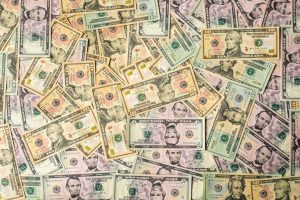The forex market is one of the most dynamic and volatile financial markets in the world, with trillions of dollars traded every day. To make informed trading decisions, traders need to have access to a wide range of information, including economic indicators that affect currency values. One of the most important tools for forex traders is the economic calendar, which provides a schedule of upcoming economic events and data releases. In this article, we will explain how to read a forex economic calendar and use it to make profitable trades.
What is an Economic Calendar?
An economic calendar is a schedule of upcoming economic events and data releases that could impact the financial markets. These events can include anything from central bank interest rate decisions to employment reports, inflation data, and gross domestic product (GDP) figures. The economic calendar also displays the expected impact of each event on the currency markets, along with the previous and forecasted values.
Economic calendars are available online, and traders can easily access them through various trading platforms or financial news websites. Some of the most popular economic calendars include the one provided by Forex Factory, Investing.com, and DailyFX.
How to Read an Economic Calendar?
Economic calendars can appear overwhelming at first glance, with a plethora of data and terminology. However, with some basic knowledge, traders can easily understand and utilize this tool. Here are some key elements to look for when reading an economic calendar:
1. Date and Time
The first thing to look for is the date and time of the event. Economic events are scheduled at specific times, and traders need to be aware of these times to take advantage of potential opportunities. Economic calendars usually display the times in the local time zone, so traders need to adjust the times accordingly depending on their location.
2. Currency and Country
The next element to look for is the currency and country that the event relates to. Economic events can impact different currencies in different ways, so it’s essential to know which currency and country the event is related to. For example, a U.S. employment report will likely impact the value of the U.S. dollar.
3. Event Type
Economic events can be classified into different types, including interest rate decisions, employment reports, inflation data, and GDP figures. Each event type has its own impact on the currency markets, so traders need to know what type of event they are dealing with.
4. Previous Value
The previous value refers to the previous release of the same economic indicator. This value provides traders with an idea of the trend and the direction of the indicator. For example, if the previous value of the U.S. non-farm payroll report was positive, it suggests that the current release could also be positive.
5. Forecast Value
The forecast value is the market consensus estimate of what the economic indicator will be. This value is usually based on surveys of economists and analysts. If the actual value is higher than the forecast value, it could be bullish for the currency, and if it’s lower, it could be bearish.
6. Impact
The impact of an economic event refers to how much the event is expected to move the markets. Economic calendars usually categorize the impact into low, medium, and high. High-impact events are the ones that are most likely to move the markets significantly and should be given the most attention.
How to Use an Economic Calendar?
Economic calendars are an essential tool for forex traders, and they can help traders make informed trading decisions. Here are some tips on how to use an economic calendar effectively:
1. Plan Ahead
Traders should plan ahead and be aware of the economic events that are scheduled for the week. This will help them prepare for potential opportunities and risks.
2. Focus on High-Impact Events
Traders should focus on high-impact events as they are more likely to move the markets significantly. Low-impact events are less likely to have a significant impact on the markets.
3. Understand the Event
Traders should understand the economic indicator and its impact on the currency. This will help them make an informed trading decision.
4. Monitor the Actual Value
Traders should monitor the actual value of the economic indicator and compare it with the forecast value. If the actual value is significantly different from the forecast value, it could be a sign of a potential trading opportunity.
5. Use Risk Management
Traders should always use risk management, such as stop-loss orders, to manage their risk. Economic events can be unpredictable, and traders should never risk more than they can afford to lose.
Conclusion
The economic calendar is a valuable tool for forex traders, providing a schedule of upcoming economic events and data releases that could impact the markets. Traders should understand how to read an economic calendar and use it effectively to make informed trading decisions. By planning ahead, focusing on high-impact events, understanding the event, monitoring the actual value, and using risk management, traders can use the economic calendar to their advantage and potentially increase their profits.





